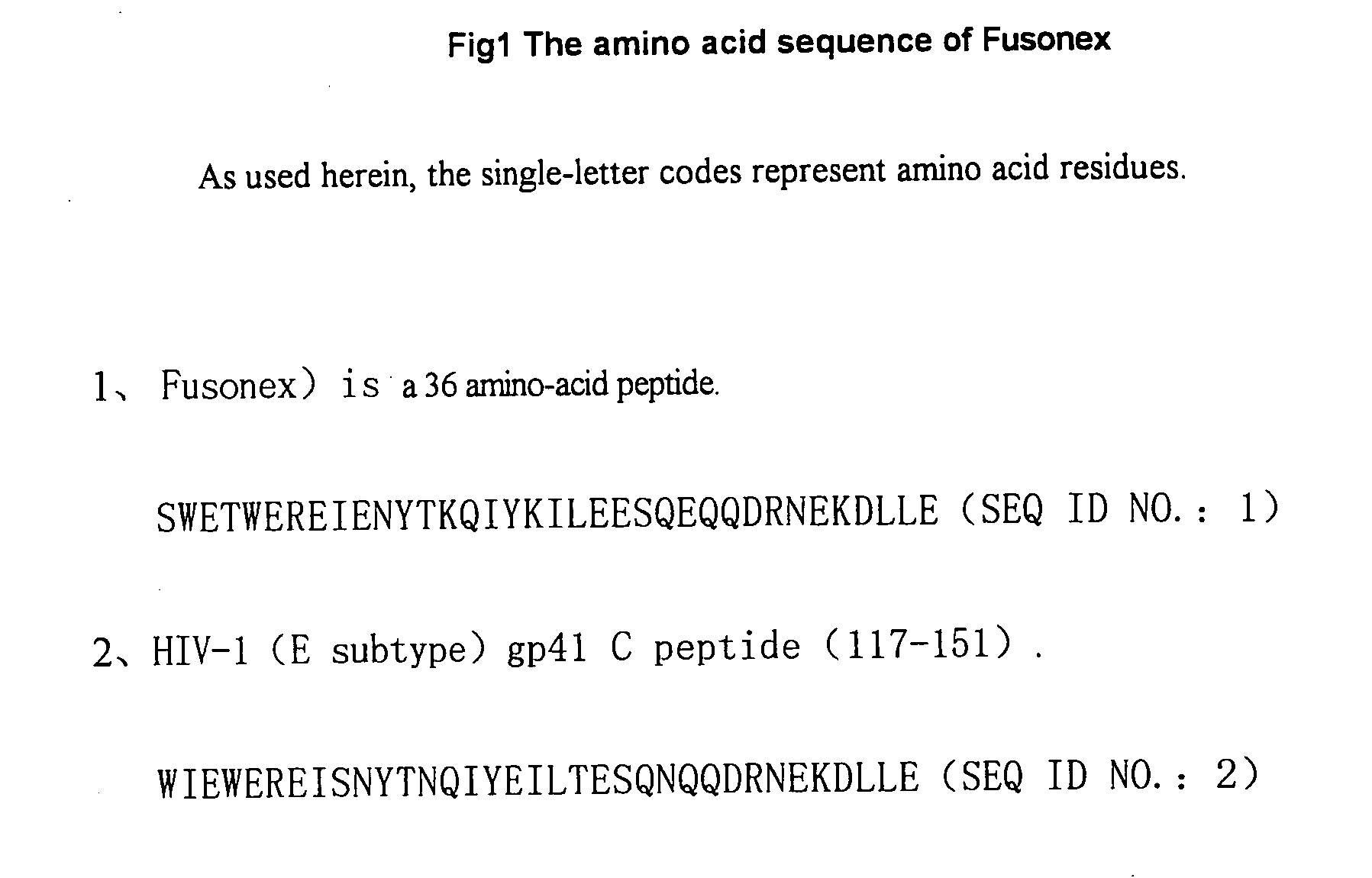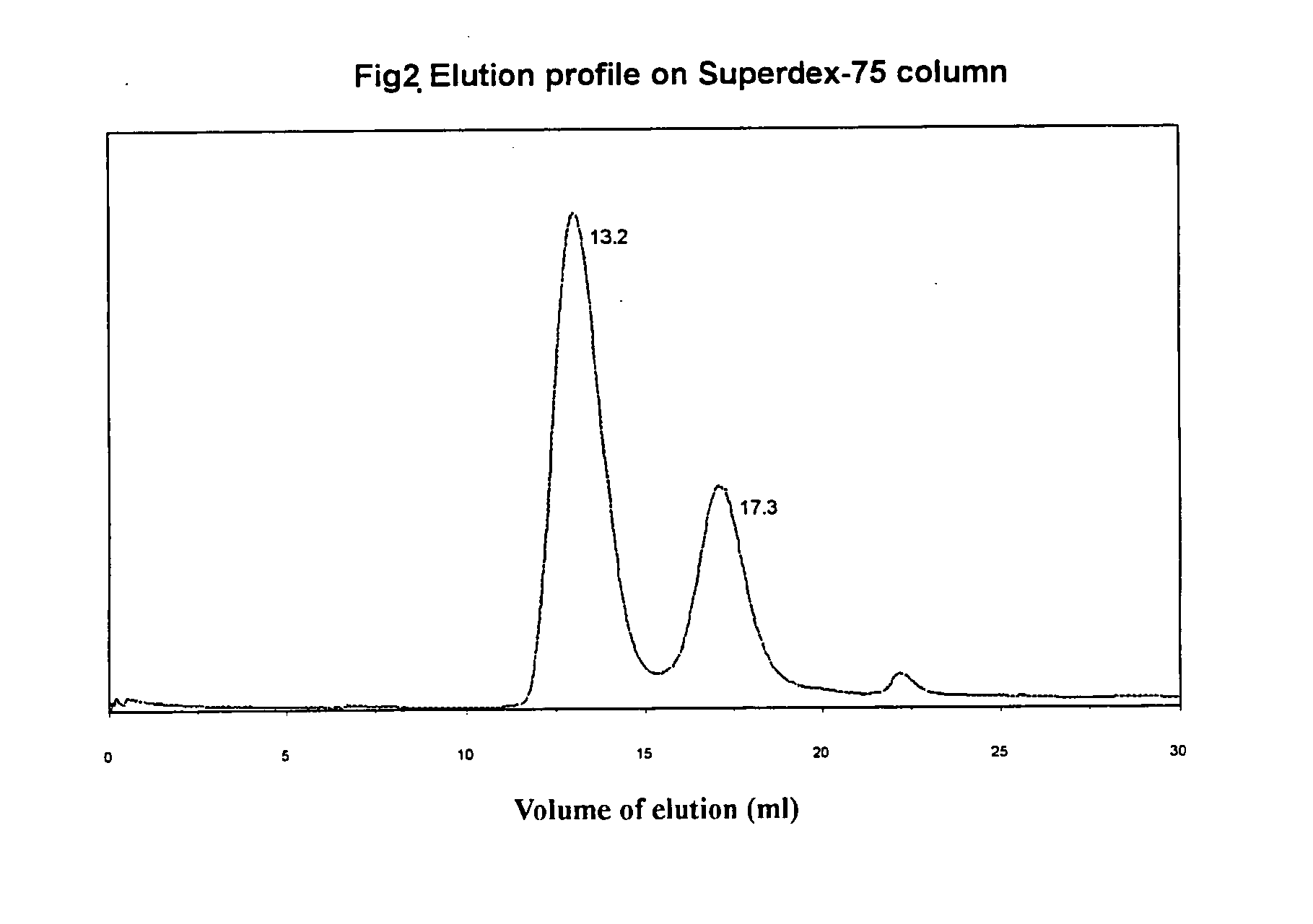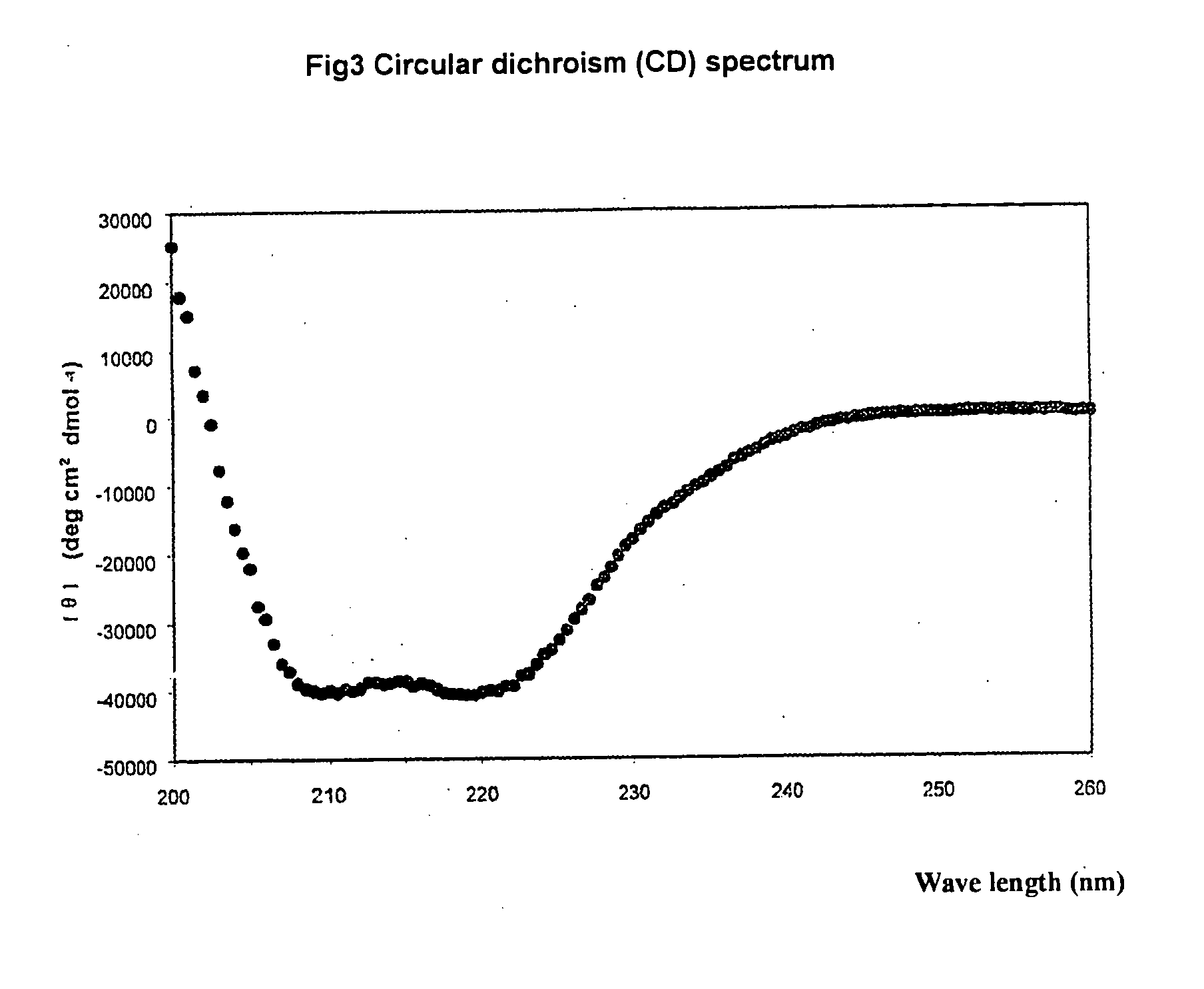Pharmaceutical used for treating HIV infection, the composition and uses thereof
a technology of pharmaceuticals and hiv infection, applied in the field of fusion inhibitors, can solve the problems of no working vaccine or cure for aids high risk of various infections in patients with aids, etc., and achieve the effects of no drug resistance, no drug resistance, and low toxicity
- Summary
- Abstract
- Description
- Claims
- Application Information
AI Technical Summary
Benefits of technology
Problems solved by technology
Method used
Image
Examples
example 1
Production and Purification of Fusonex
[0171] Fusonex was synthesized on the 431A-typed biosystem polypeptide synthesizer. The Fast-Moc chemical method was used in this synthesis, and standard solid-phase synthesizing technique was used with amino acids protected with 9-fluorenylmethyloxycarbonyl (FMOC). The reagents include TFA, water, 5% anisyl sulfide, 2.5% ethylene disulfhydrate, and 0.8M crystalline phenylphenol.
[0172] In order to prolong the biological half-life of Fusonex, its amino terminal was acetylated, and carboxyl terminal was amidated. The peptide was automatically dissociated from the resin on the apparatus, and the side chain bulky groups were automatically removed. Dissociated from the resin, the crude Fusonex peptide was precipitated for 20 minutes in cold ether at four-fold volume. After the centrifugation, the peptide was washed two times in cold ether and then dried for 24 hours.
[0173] The crude Fusonex peptide was purified by HPLC. On the C18 column (15 μm gl...
example 2
An Elution Experiment of Fusonex
[0174] The method used in Fusonex elution experiment is as follows:
[0175] On Superdex 75 chromatography column, the excess Fusonex and the complex of Fusonex and gp41 N-peptide (35-70) was eluted. The eluent was phosphate buffer. The total collection volume for the curve was 30 ml. According to the results, an elution profile (FIG. 2) was drawn, which has shown that the elution peak of the complex of Fusonex and gp41 N-peptide (35-70) was at the position of 13.2 ml, and that of Fusonex itself was at the position of 17.3 ml.
example 3
Determination of the Structure of Fusonex Complexed with gp41 N-Peptide
[0176] Circular dichroism spectra were used to determine the structure of Fusonex complexed with gp41 N-peptide. First, the sample was diluted to 25 μM, pH 7.4 in 0.1 M NaCl / 20 mM kalium phosphate, and then the secondary structure of Fusonex complexed with gp41 N-peptide was determined by CD spectra. The analysis was carried out on Aviv 62A DS circular dichroism spectrum apparatus. The peptide solution containing Fusonex and gp41 N-peptide (35-70) was measured in a wavelength range of 200-260 nm.
[0177] The conditions for the circular dichroism spectra were: 20° C., the breath of circularly polarized light was 1.5 nm, and the step was 0.5 nm, the time constant was 2.0 seconds, and the length of light cell was 10 mm. Three-level polynomial was used for the correction with the blank data. The temperature of sample was maintained with thermoelectric holder and its error range was within 1° C.
[0178] The results wer...
PUM
| Property | Measurement | Unit |
|---|---|---|
| volume | aaaaa | aaaaa |
| wavelength range | aaaaa | aaaaa |
| length | aaaaa | aaaaa |
Abstract
Description
Claims
Application Information
 Login to View More
Login to View More - R&D
- Intellectual Property
- Life Sciences
- Materials
- Tech Scout
- Unparalleled Data Quality
- Higher Quality Content
- 60% Fewer Hallucinations
Browse by: Latest US Patents, China's latest patents, Technical Efficacy Thesaurus, Application Domain, Technology Topic, Popular Technical Reports.
© 2025 PatSnap. All rights reserved.Legal|Privacy policy|Modern Slavery Act Transparency Statement|Sitemap|About US| Contact US: help@patsnap.com



